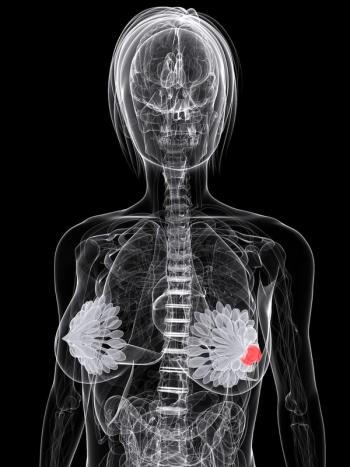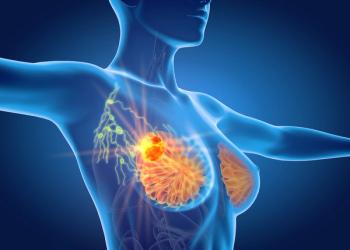
Oncology NEWS International
- Oncology NEWS International Vol 6 No 5
- Volume 6
- Issue 5
Tumor Biomarkers May Play Role in NSCLC Treatment Choice
CHICAGO--Cellular tumor bio-markers may be able to identify patients with N1 non-small-cell lung adenocarcin-oma who could achieve better survival and control of metastasis through aggressive adjuvant therapy, Ritsuko Komaki, MD, said at the Radiological Society of North America meeting.
CHICAGO--Cellular tumor bio-markers may be able to identify patientswith N1 non-small-cell lung adenocarcin-oma who could achieve better survivaland control of metastasis through aggressive adjuvant therapy, RitsukoKomaki, MD, said at the Radiological Society of North America meeting.
Dr. Komaki and her colleagues at M.D. Anderson Cancer Center studied137 patients with N1 non-small-cell lung cancer (NSCLC) and hilar lymphnode involvement whose primary lung tumors exhibited six biomarkers beforetreatment--mitotic and apoptotic indexes, DNA and S+G2M cell cycle profiles,and Ki67 and p53 positivity.
She then assessed the ability of each biomarker to predict the outcomeof treatment in terms of five-year survival, disease-free survival, andcontrol of metastasis.
The rates of cellular production, proliferation, and loss, as measuredby mitosis, DNA profile, and apoptosis, were the most indicative of theeventual outcome of therapy, but they were "more predictive of treatmentoutcome in patients with adenocarcinoma than squamous cell carcinoma,"she said.
In patients with adenocarcinoma, a high pretreatment mitotic index wasassociated with greater distant spread of metastasis. High apoptotic indexpredicted increased distant metastases and worse disease-free survival.High DNA index was prognostic for poorer local control, increased metastasis,and poorer disease-free survival.
For patients with squamous cell lung carcinoma, high mitotic index predictedbetter overall survival, and a high S+G2M cell fraction and increased Ki67positivity were associated with better local control of disease. None ofthese relationships was statistically significant, however. In addition,the apoptosis index and DNA profile had no predictive value in patientswith this form of lung cancer.
Assessment of mitosis, apoptosis, and DNA biological tumor markers beforetreatment nevertheless could help improve the dismal overall 30% to 50%five-year survival rate for the adenocar-cinoma subgroup of patients withN1 NSCLC that has involved the hilar lymph nodes, Dr. Komaki said.
"Patients with N1 adenocarcinoma and higher mitosis, apoptosis,and DNA index might get more beneficial outcomes by having adjuvant therapy,"she said. "I think these are patients we can target to be cured bygiving some sort of adjuvant therapy."
Articles in this issue
over 28 years ago
Delaying Chemotherapy May Compromise Distant Controlover 28 years ago
Precision Dosing a Reality with Intensity Modulated RTover 28 years ago
Breast Cancer Guide on CD-ROM Is Availableover 28 years ago
Mammography's Predictive Value May Be Improvedover 28 years ago
Oncology Administrators Must Plan for Transition in Mergersover 28 years ago
Differentiation Agent Improves Myelodysplasia Survival Ratesover 28 years ago
NCPB Hears From Several Cancer Groups on Policy Issuesover 28 years ago
Guidelines Needed for Distress in Cancer Patientsover 28 years ago
Skin Cancer Project Receives Recognitionover 28 years ago
Few Patients Surveyed Regret Prophylactic MastectomyNewsletter
Stay up to date on recent advances in the multidisciplinary approach to cancer.
















































































